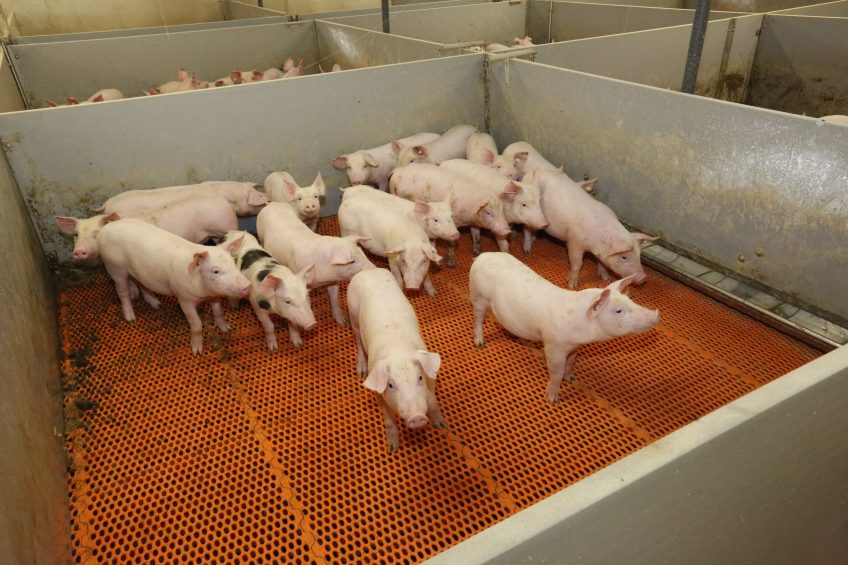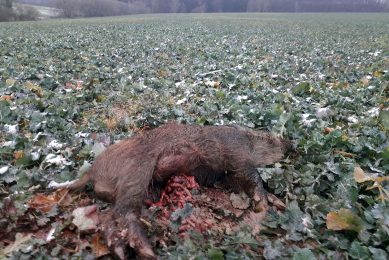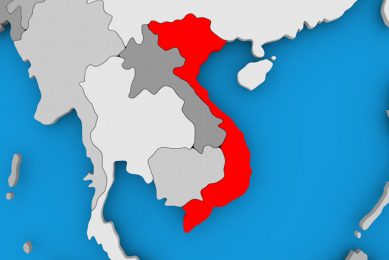M. hyo: Why early treatment is important

Mycoplasma hyopneumoniae is one of the main culprits with regard to Porcine Respiratory Disease Complex (PRDC) in finisher pigs. It pays to control the bacteria at the sows, to avoid it having an impact on their offspring in later life.
Respiratory disease is one of the biggest threats to the health of growing pigs, accounting for more than half of all treatments administered to them. Its economic impact is very significant, however, producers seldom reflect on any adaptation of their control strategies.
Mycoplasma hyopneumoniae (M. hyo) is considered as a primary contributor to the Porcine Respiratory Disease Complex (PRDC). This remains the case even after considerable progress in diagnostics, in the design of ventilation and housing systems.
Solutions are therefore needed for the development of optimal treatment and control strategies for this disease. This is illustrated by Table 1, from different studies carried out by Eco Animal Health, illustrating the percentage of slaughter pigs with lung lesions. Table 2, compiled by researcher Dr Annelies Michiels of Ghent University, shows the percentage of pneumonia detected in slaughter pigs has barely changed in the last 20-30 years.
That should not lead to the conclusion that the measures implemented are not as efficacious as they were once perceived to be. The likely reason for this failure in the control of mycoplasmal pneumonia is that the challenge may have become worse.
Important characteristics of M. hyo
M. hyo has a particular set of characteristics which must be taken into consideration when defining the best disease control strategy.
1. Extremely low rate of horizontal transmission;
2. Extended shedding time by infected sows (in excess of 200 days);
3. Vertical transmission from sow to piglets, which plays a role in the case of gilt litters;
4. Clinical signs are closely associated with the infectious pressure of each pig.
These characteristics have a major role in explaining the clinical expression of the disease in modern systems of production. To this effect, research work in 2005 proved a significant relationship between the prevalence of M. hyo at weaning with the severity of lung lesions found at slaughter. It certainly represents a major step forward to understand the dynamics of infection by M. hyo in modern production units, and defines the pivotal role of vertical transmission in the clinical presentation of the disease.
This and other studies developed by a research group of the University of Minnesota, USA in 2005, led to the conclusion that immunity levels and excretion levels by the sow are the most important factors in the epidemiology of the infections by Mycoplasma in segregated weaning programmes. This statement is very likely also valid for farrow-to-finish systems managed all-in/all-out per production batch.
The role of sows’ immunity and excretion levels has become paramount due to the increasingly important role that gilts play in modern production systems. The percentage of gilts in the sow inventory is increasing due to higher replacement rates and higher number of farrowings per sow, per year. The fact that some of these production systems receive M. hyo negative replacement stock, increases again the challenge that vertical transmission plays in this disease, since the production system needs to ensure that these gilts develop immunity against the disease, yet are not infective to other individuals or their own litters.
Antibiotic treatment to reduce the prevalence in the early stages of the life of the finishing pig could potentially permit maintaining low infection pressures. In the later stages of the pig life, that could prevent the clinical expression of the disease.
Reducing M. hyo infection levels
Several experiences have indicated the potential of preventing vertical transmission of M. hyo via antimicrobial treatment pre-farrowing. Researchers Spindler and others, as presented at the ESPHM in Prague, Czech Republic, in 2017, carried out a study measuring the impact of treating sows with an oral macrolide pre-farrowing (Aivlosin, Eco Animal Health) on the prevalence of M. hyo as detected by PCR on tonsillar swabs in gilt litters at weaning versus an untreated control (see also Figure 1).
Figure 1 – PCR prevalence for M. hyo in litters at weaning from untreated and treated gilts for five days pre-farrowing with an antibiotic* at 5.0 mg/kg body weight/day via the drinking water.

The research confirms the potential to control the prevalence in the early stages of the life of the pig, therefore influencing and reducing the severity of clinical mycoplasmal pneumonia through the finishing pig’s life. The opportunity to reduce vertical transmission of M. hyo could also be used to manage the prevalence of colonisation in piglets shortly after weaning or at the start of the finishing phase of production, when other interventions take action, for example for the control and treatment of ileitis.
Using an antibiotic against M. hyo can therefore be responsibly applied for prevention of vertical transmission and/or to modify the percentage of infected pigs in the early stages of production. Consequently, the infection pressure would not reach the levels needed to develop the clinical expression of the disease. Such interventions can be economically beneficial and reduce or minimise clinical signs and lesions from mycoplasmal pneumonia and its correlated cost in production.











